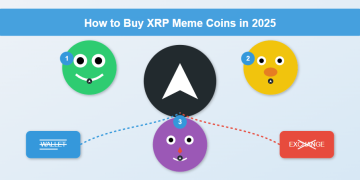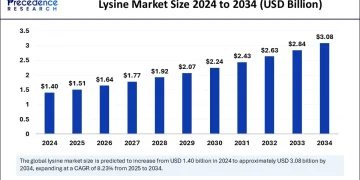When it comes to building a successful Software as a Service (SaaS) business, one of the first questions entrepreneurs face is whether to target businesses (B2B) or consumers (B2C). Understanding the differences in profitability between these two models is crucial for making the right decision.
In this article, we’ll explore the key factors that make B2B SaaS generally more profitable than B2C SaaS and introduce a third option that might be the best of both worlds.
Understanding B2B and B2C SaaS
B2B (Business to Business) SaaS involves selling software services to other businesses. Examples include platforms like Asana, HubSpot, and MailerLite. These tools help companies manage operations, communication, and marketing more effectively.
B2C (Business to Consumer) SaaS, on the other hand, targets individual consumers. However, true B2C SaaS is relatively rare. Most of the time, when we think of subscription services for consumers, we think of content platforms like Disney+ or Amazon Prime, which don’t quite fit the traditional SaaS model.
B2C SaaS products do exist, but they typically only succeed at a very large scale due to the challenges in pricing and customer retention.
The Challenges of B2C SaaS
B2C SaaS faces several challenges that make it less profitable compared to B2B:
- Low Pricing: Consumers are often unwilling to pay high prices for software, typically expecting to pay around $10 to $15 per month. This low revenue per customer makes it difficult to cover the high costs of building and maintaining a SaaS product.
- High Churn Rate: Consumers tend to switch services more frequently than businesses, leading to a high churn rate. This means B2C companies constantly need to attract new customers just to maintain their revenue.
- Costly Customer Acquisition: Since the revenue per customer is low, B2C companies have limited budgets for acquiring new customers. This makes it hard to invest in effective marketing strategies.
Let’s take an example of a small-scale B2C SaaS company called FantasyPlay, which offers a virtual tabletop platform for playing role-playing games online.
With pricing tiers of $6 and $10 per month, FantasyPlay would need about 33,000 free users to convert 1,000 paid customers at an average revenue of $8,000 per month.
However, with a high churn rate and the need to attract thousands of new users every month, it’s challenging to sustain and grow the business.
Why B2B SaaS Is More Profitable
B2B SaaS, in contrast, offers several advantages that typically lead to higher profitability:
- Higher Pricing: Businesses are willing to pay much more for software that solves critical problems, often paying $50, $100, or even thousands of dollars per month. This higher revenue per customer provides a much better return on investment.
- Lower Churn Rate: Businesses are less likely to switch services frequently because they integrate software deeply into their operations. This leads to a more stable and predictable revenue stream.
- Better Unit Economics: With a higher budget for customer acquisition, B2B SaaS companies can invest in marketing strategies that attract more qualified leads.
For instance, to generate $8,000 in monthly recurring revenue (MRR) with an average price of $80 per account, a B2B company might need just 100 customers. Moreover, the lower churn rate and higher revenue per customer allow B2B companies to scale more effectively and achieve profitability faster.
The Best of Both Worlds: B2B and B2C Combined
While B2B SaaS is generally more profitable, there’s a third approach that can offer the benefits of both models: B2B2C (Business to Both Consumers and Businesses). This model involves targeting both high-paying businesses and a large base of consumers or “prosumers” (professional consumers).
Companies like PodHost and StreamRecord, which provide podcast hosting and recording services, use this dual-funnel approach. They offer affordable plans for individual podcasters while also catering to large podcast networks and companies willing to pay premium prices.
This strategy allows them to build a strong brand with a broad customer base while benefiting from the high revenue generated by their business clients.
Validating Your SaaS Idea with No-Code Tools Like Bubble
Before diving into the full development of your SaaS product, it’s crucial to validate your idea. Building a Minimum Viable Product (MVP) is a smart way to test your concept with real users and gather feedback. This approach allows you to make adjustments before investing significant time and resources into a full-scale launch.
One of the best ways to build an MVP quickly and cost-effectively is by using no-code tools like Bubble.io, a no-code platform that enables you to design and develop fully functional web applications without writing any code. It’s particularly useful for entrepreneurs who have a great idea but lack the technical skills to build the software themselves.
With Bubble, you can:
- Design your app using a drag-and-drop interface.
- Create dynamic content and workflows that respond to user interactions.
- Connect to APIs and integrate third-party services without hassle.
- Launch your MVP to gather user feedback and validate your SaaS idea.
If you’re not familiar with Bubble or don’t have the time to learn the platform, you can turn to experts like Zeroqode, the first no-code agency specializing in Bubble and has built over 300 apps using the platform. Some of their projects have even been selected for the Y Combinator (YC) Batch 23, which shows the quality and potential of apps built on Bubble.
By using Bubble and agencies like Zeroqode, you can efficiently bring your SaaS idea to life, test it in the market, and refine it based on real-world feedback. This approach minimizes risk and ensures that your final product is more likely to meet the needs of your target audience.
Conclusion
When considering the path to SaaS profitability, starting with an MVP built on no-code platforms like Bubble.io can be a game-changer. It allows you to validate your idea quickly and affordably, making it easier to pivot or scale based on user feedback.
Whether you choose to target businesses (B2B), consumers (B2C), or both, ensuring that your idea has traction before full development is a crucial step toward building a successful SaaS business.










